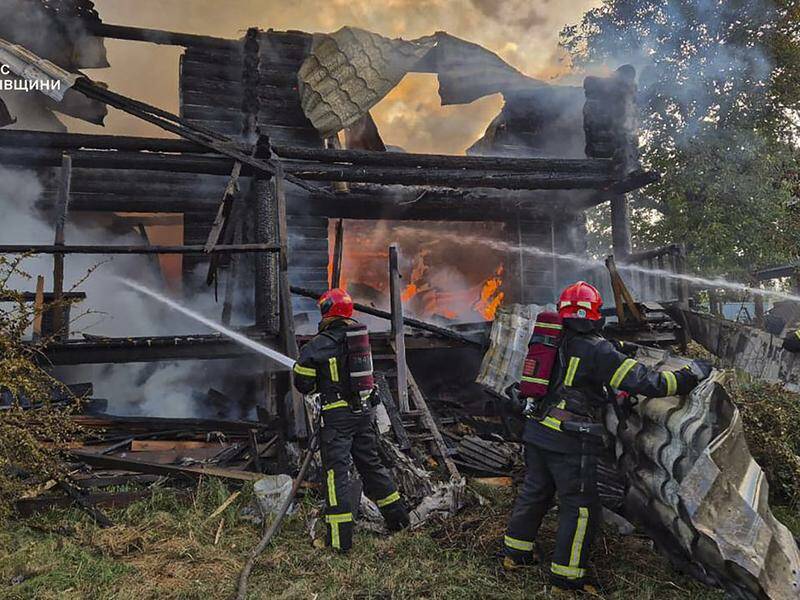
Russia has executed one of its largest aerial assaults on Ukraine in 2025, deploying a staggering total of 574 drones along with 40 ballistic and cruise missiles. This attack occurred overnight and primarily targeted western regions of Ukraine, where much of the military aid from Ukraine’s Western allies is reported to be stored. Ukrainian officials confirmed that the strikes resulted in the death of at least one person and left 15 others injured.
The Ukrainian Air Force characterized this attack as the third largest this year based on the number of drones used and the eighth largest in terms of missile launches. This escalation coincided with renewed diplomatic efforts led by the United States to negotiate a peace settlement following Russia’s invasion of Ukraine in February 2022.
Diplomatic Efforts Continue Amid Hostilities
Recent discussions have taken place between US President Donald Trump and Russian President Vladimir Putin, with a meeting in Alaska last week. Earlier this week, Trump hosted Ukrainian President Volodymyr Zelenskiy along with European leaders at the White House to discuss the ongoing conflict. Despite these high-level talks, Russian forces have launched nearly 1,000 long-range drones and missiles at Ukraine since these discussions began.
Zelenskiy and European leaders have accused Moscow of stalling peace negotiations, particularly in response to Ukraine’s proposed ceasefire and Zelenskiy’s invitation for direct talks with Putin. The Kremlin’s reaction to these overtures has been lukewarm, highlighting a lack of genuine interest in pursuing meaningful dialogue.
In his condemnation of the overnight attacks, Zelenskiy remarked that the strikes were conducted “as if nothing were changing at all,” underscoring his frustration with Russia’s unwillingness to engage seriously in negotiations. He called on the international community to intensify pressure on Moscow, suggesting stronger sanctions and tariffs as possible measures.
Escalating Conflict and Its Consequences
As the conflict continues, Ukraine has maintained its counteroffensive operations, utilizing domestically produced long-range drones to target Russian infrastructure supporting its military efforts. Notably, recent strikes have focused on oil refineries, pushing Russian wholesale petrol prices to record highs.
Most of the missiles launched during the recent attack originated from within Russia and penetrated deep into western Ukraine. Areas far from the frontline, such as the city of Lviv, were affected significantly. In Lviv, one individual was killed, and three others were wounded as the attack damaged 26 residential buildings, a kindergarten, and administrative offices, according to regional head Maksym Kozytskyi.
Ukrainian Foreign Minister Andrii Sybiha revealed that one of the strikes targeted a “major American electronics manufacturer” in western Ukraine, which Zelenskiy noted produced domestic appliances. In a statement embargoed until Thursday, Zelenskiy indicated that Ukraine would engage in intensive meetings to clarify the security guarantees its allies are prepared to offer. The outcomes of these discussions are expected to be outlined within 10 days, paving the way for potential direct negotiations with Putin for the first time since the full-scale invasion began.
Zelenskiy suggested that these talks could also take place in a trilateral format involving Trump, with Switzerland, Austria, and Turkey identified as potential venues. Meanwhile, Russian Foreign Minister Sergey Lavrov asserted that any discussions regarding security arrangements in Ukraine without Moscow’s participation are not feasible, as reported by state news agency RIA Novosti.
In his meeting with Trump, Zelenskiy aimed to clarify the situation on the battlefield, refuting claims suggesting that Ukraine’s position was more dire than it truly is. He pointed to inaccuracies in US maps that depicted Russian territorial control as more expansive than it actually is.
As the conflict continues to evolve, the impact on civilians and infrastructure remains profound, highlighting the urgent need for a resolution to the ongoing hostilities.






